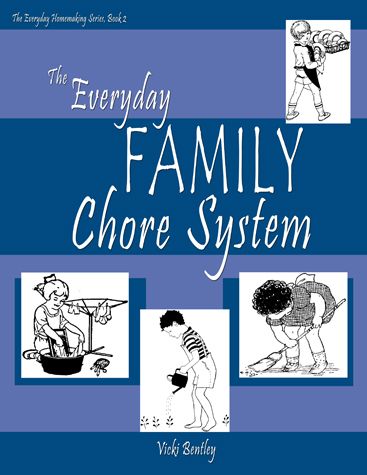 TRUE STORY: Almost exactly a year ago, Schnickelfritz's grandparents moved from several states away to just two miles down the road. While we are thrilled to be able to spend more time with them on a more spontaneous level we also discovered that we have MUCH less time to tidy the house when the call to say they are coming for a visit. That's when the panic-picking-up session begins. One day, I barked orders to my son to "pick up everything in the living room." He turned to me and questioned, "Mama, how do you expect me to pick up the couch?"
TRUE STORY: Almost exactly a year ago, Schnickelfritz's grandparents moved from several states away to just two miles down the road. While we are thrilled to be able to spend more time with them on a more spontaneous level we also discovered that we have MUCH less time to tidy the house when the call to say they are coming for a visit. That's when the panic-picking-up session begins. One day, I barked orders to my son to "pick up everything in the living room." He turned to me and questioned, "Mama, how do you expect me to pick up the couch?"You really needed to be there to hear the tone of his voice. This wasn't a matter of "sassing back." It's just his concrete-sequential means of processing information meant he took my order literally. For me to teach my son to clean, I need clear and specific guidelines. The trouble is, I'm not the one to give them. I'm more of an abstract-random processor. When I pick up an object in one room and take it to another to put away, I'm often distracted by a new object in that room which leads me to a new task and I never get back to tidying the first room. I've never actually started a chore and worked through it in one swoop to construct the guidelines for Fritz to use. To be honest, I could use my own list of steps to follow and check off to keep me on task. As it is, there are usually so many half finished jobs around the house that it's easier just to put up a humorous sign like "A cluttered desk is the sign of a creative mind."
Enter our current review product: The Everyday Family Chore System--the second book in The Everyday Homemaking Series.
I printed out the entire ebook, bound it, and laminated the covers. The inside was chock full of several tools to help both my son and me. First on the list, a page entitled "What is a Tidy Room?" Up until now, when I send my son to clean his room he'll come back to me to ask if it's clean enough yet. I'll point out several things that haven't been done and leave him to deal with them. Some he'll remember, some will be forgotten as he deals with other tasks. He'll find me again and we'll repeat the process several more times. Now he has a written set of standards to refer to so that he doesn't need my inspection until the chore is done. (It is also free from the whims of a mom who may be more lenient when I'm too busy with my own issues or too tough when I've had a bad day).
 |
| Our version of What is a Tidy Room |
While the Tidy Room list is more about principles, there are also chore cards that can be cut out and laminated with detailed steps on how to do everything from how to clear the table to how to clean the ceiling fans. Often the cards leave spaces for you to enter the specific cleaning products you use in your house. I'll be honest, some of those cards led me to think of chores I never would have considered before--the whole out of sight out of mind thing. Cleaning the top of the refrigerator or under the sink, for example. I'm not saying we do them all now, but I'll consider adding them to the list as we get the rest of the house under control.
I'll admit that part of the book left me feeling depressed and convicted that I have let chore training slide for so long. In the Implementation section is a Life Skills list showing what tasks a child should be able to begin training on at each age. I feel so far behind... I didn't start teaching him to put away clothes when he was five (that's why they often still sit on top of his dresser at age nine). On the other hand, some jobs on her list seem unreasonable, like oiling bike chains at 9 or emptying the dishwasher at 6--what kid can reach the upper cabinets at six? Bottom line, don't wait as long as I did to get this book and start training your kids. This book is not about turning your kids into you personal set of house-cleaning slaves, but wouldn't your house be cleaner if they were working with you instead of constantly adding to the mess?
Is our house ready to be on the cover of Better Homes & Gardens? No! but it is much cleaner, especially in the areas that guests might see. And we'll continue plugging away at the rest as we get it uncluttered (the book is about cleaning, not throwing away junk).
Everyday Homemaking offers the Family Chore System as a coil-bound softcover ($19.99 + shipping) or a PDF download ($17.99). You may want to consider picking up the CD audio workshop, "Getting Kids to Help at Home" or their other book, Everyday Cooking as well. By the way, you'll want to check out the other reviews to read more about Everday Cooking.
Disclaimer: I received a free e-copy of the Everyday Family Chore System for the purpose of completing this review. There was no other compensation for my honest opinion.




1 comment:
I had to chuckle at the life skills checklist note--not a lot of kids anymore even know how to oil a bike chain, but when I was a kid, we could not only oil the chain but replace one at age 10 (but then again, we all rode bikes). On the dishwasher note, a younger child may be able to empty and just put away what he can reach, then put the rest onto the counter for an older person to help with, so at least the dishwasher can be used. Just use the list as a tool (I still can't do a lot on the 13+ list! LOL) I can tell you were certainly thorough in your evaluation of the book -- what a helpful review!
(From Vicki, not Bekah -- used her Google acct to post)
Post a Comment